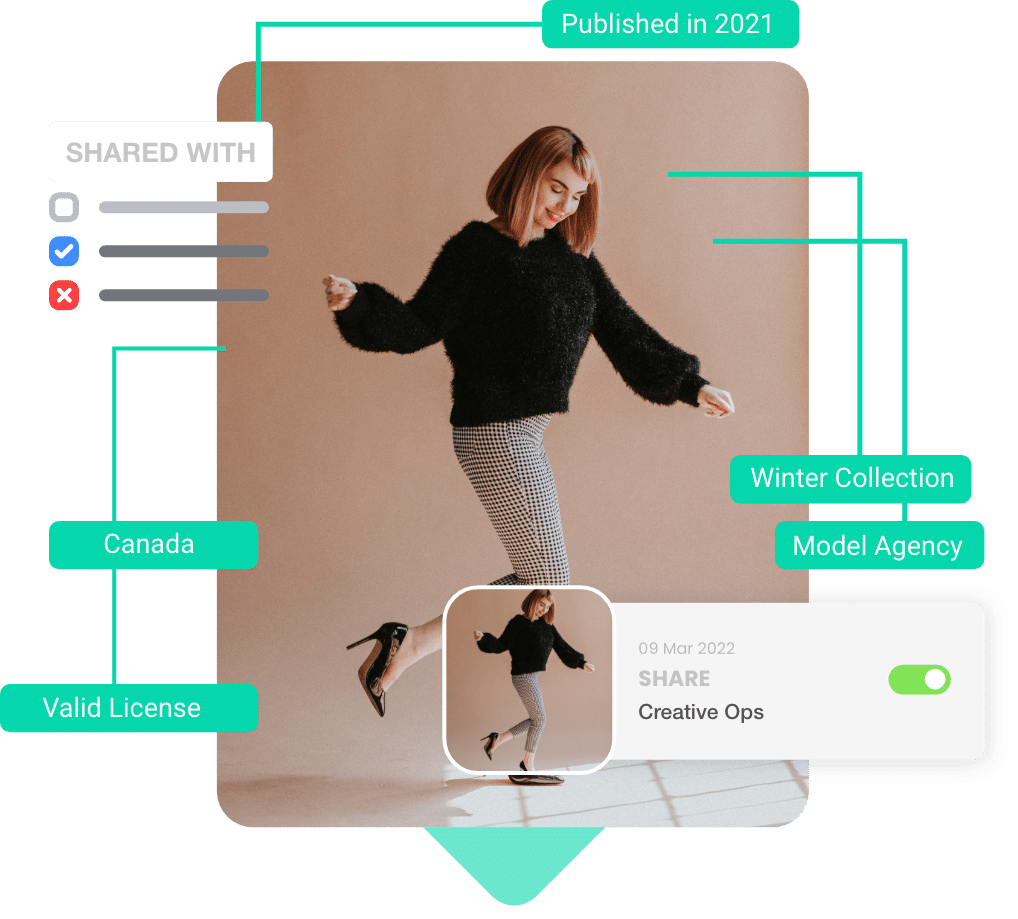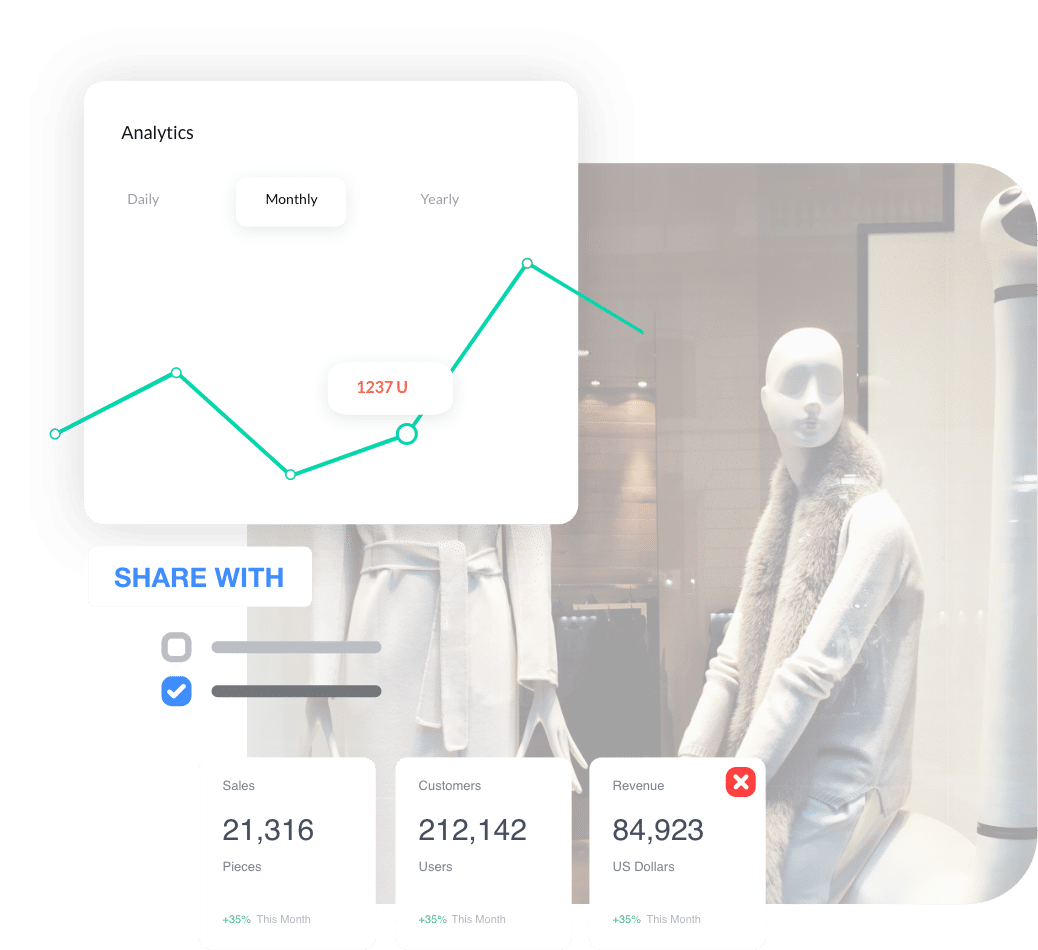Since the 1990s, digital asset management systems (DAMs) have made the promise to relieve some of the burdens of work. But as many of us know, even fabulous DAMs come with sprawling folder structures, endless maintenance, and confusing data dashboards. What if—instead of cascading into chaos—it tended to improve with use? What if those dashboards offered data that was so helpful you came to consider it indispensable?
Let’s explore the valuable data you can gather from your DAM and how to implement it. Use ‘popular’ search terms to inform content, compare data sets to reveal progress, and better understand your creative team’s high-performing campaigns—and more.

Level 1 - Discover unlikely search insights
Tags. Tags. Tags. They can either be the bane of your existence or your savior. Users are constantly searching for assets in your DAM, so in order to expedite the process, you should continually be improving your tagging systems. Most DAM managers gather the most popular search terms and use that data to extrapolate where the tagging process could be more efficient. But this method only gets you part of the way—we call that survivorship bias. If you’re only looking for what DAM users searched successfully, you’re missing the most important search terms—those they used that resulted in them not finding what they needed.
Find out what search terms users are choosing that result in the incorrect asset results. How many attempts does it take a user to find what they need? How close to the exact tag do their search terms need to be? What you’ll discover is how to better refine or expand your tagging system to enable users to find assets faster and with better accuracy.
Most importantly, your users are telling you what content they need and how they search for it—if you take the time to ‘listen’ to them. Perhaps, your designers are constantly searching for smiling faces of masked people using your skincare products. They’re searching ‘mask’ only to discover stock images of masks used in internal communications. Exploring unsuccessful search terms can reveal a content gap in your assets and help you support your creative teams in filling that gap. Marketing and creative leaders will thank you for keeping their teams in the loop of the changing needs of your global partner and teams.
Data is a foundational element of DAM success. Learn how to set up your DAM to deliver key insights in our webinar DAM Data 101.
Level 2 - Comparing data sets to discover workflow insights
If you’re using your DAM to move content from creation to approval, your users no longer suffer from endless email threads, permissionless assets, and rogue edits.
But what if I told you that your workflows could get even better? The data in your DAM can reveal the inefficiencies in how users complete workflows. The first step to discovering areas for workflow improvement is setting a benchmark for comparison.
You can start by gathering data on:
- When your tech stack changed—Identify any third-party software the DAM has replaced or consolidated in the past 3-5 years. Note when that change happened.
- Average creative time to approval—Pick a window of time before and after you implemented the DAM. Has your DAM made collaborating with global partners easier? How much time did approvals take before and after?
- Project and partner—Compare approval cycle time and ease based on project or partner.
Within a selected window of time (one quarter, one year, or three years), what have been the results? The next step is to use this benchmark to inform workflow solutions and improvements.
For example:
- If your DAM has effectively replaced software in your tech stack—explore new features in the DAM to discover what other software your DAM could streamline such as workflow or rights management tools.
- If your approval cycles are growing faster and producing better assets—show your leadership how the DAM is continually improving workflows. Prove the value of the DAM and your role in managing it.
- If it’s not, use that data to inform better workflows. Reach out to users and managers to understand how the approval process could be improved.
- If some partners appear to speed through the approval process where others lag—inform your creative teams and reflect on what’s working (or not) when collaborating with a partner. Adjust project timelines, address blockages in workflow or communication, and use the opportunity to continually improve your partner relationships.
Level 3 - The data behind your high-performing assets
To ascend to this level, you need to take advantage of the data your DAM collects on the content it holds. You’ll need real-time insights into how your content is being used and who is using it. Explore how your DAM tracks asset and campaign performance to measure the impact on conversion and revenue. If your DAM isn’t providing these Level 3 insights, Tenovos does.
Discover which personas respond to which assets, or how your newest campaign is impacting brand loyalty—access to this data makes you, as the DAM’s manager, your team’s greatest ally. With asset and campaign performance data, your creative and marketing teams can replicate the success of past campaigns or pinpoint criteria for improvement.

Leveling Up Your DAM Data And Your Brownie Points
DAM data can help you support improvements to your organization that are sure to be well- received by your creative and leadership teams. From discovering content gaps, improving approval cycles, and replicating the success of high-performing campaigns—the value of the data your DAM provides cannot be understated. And neither can your role in providing it.
